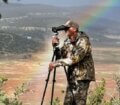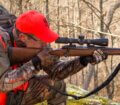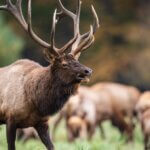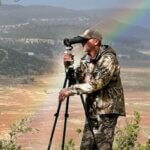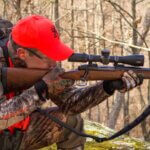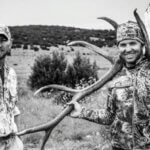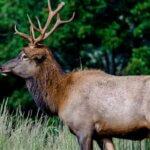Editor’s Note: This week, Ryan “Reno” Capps, [email protected]), a longtime elk guide, who lives when not guiding in the Loudon/Fort Sill area of Oklahoma, tells us reasons hunters don’t take elk. “I’ve been hunting elk since 1997, when I went to New Mexico and started guiding. The company’s Facebook page I work for is Black Mountain Hunts LLC and (http://www.blackmtnhunts.com/), and we have about 400,000 private acres where we hunt. One of the ranches we lease is 250,000 acres, one of the biggest ranches in New Mexico. We also have a bunch of combined properties that adjoin the 250,000 acres. I mainly guide in Units 12 and 13, where I’ve been hunting since 2005. Elk hunters can draw tags and have us guide for them, but we also have guaranteed elk owner tags. Here are five more reasons hunters don’t get their elk when they come West.”
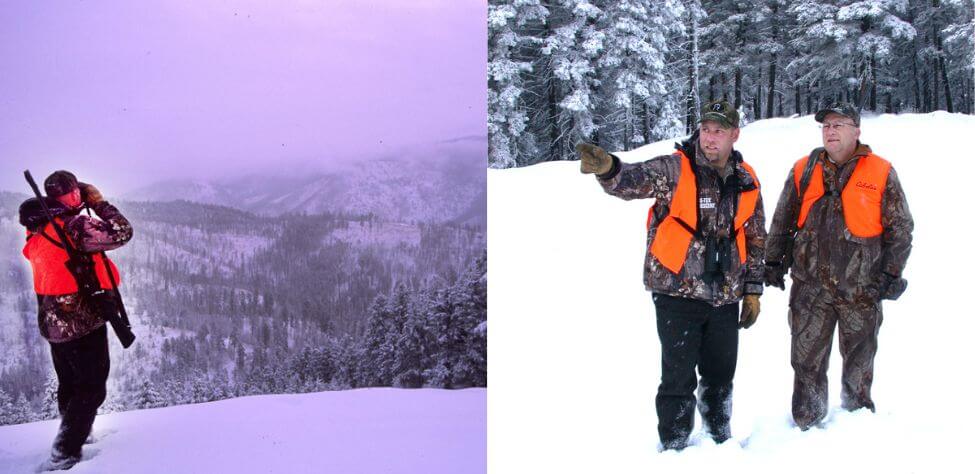
Hunters may not take elk because they don’t study the unit they’re hunting. If a hunter doesn’t study the maps of where he or she will be hunting, he won’t know exactly what to expect about the size of antlers he’s hoping to take. For instance, if the area you’ve chosen to hunt doesn’t have 350- or 400-inch bulls in it, you probably won’t take an elk that size. The elk generally taken with Black Mountain Outfitters (BMO) will score from about 300-320 inches, although we do take some bulls bigger than that. So, if you plan a trip to try and take a 350-400+ inch sized bull, and there’s very-little chance to see that size bull where you’re hunting, you’ll come away from the hunt disappointed. Of course, just about every hunter who comes to New Mexico wants to shoot a new New Mexico record-sized bull elk.
I tell my hunters, “I already know the size of elk you want to shoot.” I ask, “However, what size bull will you shoot if we see him?” I want my client to harvest a bigger bull than any of the other BMO guides’ clients will take, even though we work together as a team. However, if you tell me that you don’t intend to shoot a bull that’s 315-320 inches, then I know where the starting point is that will help me find the bull that makes you happy. But if our area has had two years of drought, I’ll tell you, “Buddy, we’re going to hunt as hard as we can and do everything that we can to get you the bull you want, but that may not happen.”
If you come with unrealistic expectations, like wanting to take a 450+ bull, I’m fairly sure we can’t do that. Therefore, you need to know the size of bulls most often taken on the unit where you’ll be hunting. Otherwise, your elk hunt will be disappointing. If you understand the average-size elk taken in the unit where you’ll hunt, and the average-size bull that the outfitter and his guides are taking, you’ll have better luck. The guide will attempt to find the bull for you that he knows you’ll shoot.
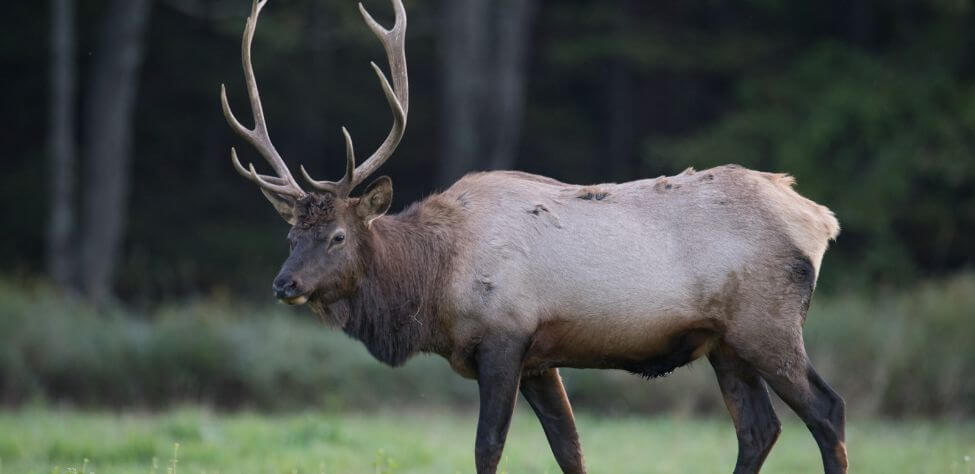
Your guide wants you to be satisfied and happy. He wants you to know that there’s a good chance of finding the size bull you want to shoot. On an average hunt with me, if you just want to shoot a young bull, I feel I can be 100% effective. A young bull will be a 5×5 or a 6×6 that will score about 280 inches. We’ll have plenty of them to hunt. Our average bull at BMO is about 300-330 inches. We have taken a bull that has scored 440 inches in 2015. One of our clients took a bull that scored 380 inches as a 6×6, and he was a giant. Another one of my clients killed a bull that scored 360 inches; however, his rack was busted-up. But if his antlers hadn’t been broken off, he would have scored 406.
Some State Deadlines for Elk Tags: (These deadlines may change but were listed in early 2023.)
Alaska – December 15, 2023 for 2024;
Arizona – February 14, 2023;
Arkansas – June 1, 2023;
California – June 21, 2023;
Colorado – April 3, 2023;
Idaho – June, 2023;
Kentucky – April 30, 2023;
Michigan – June 1, 2023;
Minnesota – dates available mid-May, 2023;
Missouri – May 31, 2023;
Montana – April 1, 2023;
Nebraska – Not available at this writing;
Nevada – May 10, 2023;
New Mexico – March 22, 2023;
Oklahoma – Not available at this writing;
Oregon – May 15, 2023;
Pennsylvania – July 31, 2023;
Tennessee – February 22, 2023;
Utah – April 27, 2023;
Virginia – March 30, 2023;
Washington – May 17, 2023; and
Wyoming – January 31, 2023.
Tomorrow: Elk Hunters Not Choosing Best Times
Expert Guidebooks on Elk Hunting: Best Sellers

Secrets for Hunting Elk
The quickest, easiest (if there is an easy way), and safest way to find and take that bull elk of a lifetime will be to hunt with a guide.
Chad Schearer, a longtime Montana guide and TV personality, told me, “My hunter is my gun. If I get to the elk, and my hunter isn’t with me, then we don’t take the elk. My job is not only to find the elk but also to help the hunter get to the elk and make the experience as enjoyable as I can for him.” That’s the kind of fella with whom I want to go elk hunting.
An elk hunt can be tough, but it doesn’t have to be so tough that you don’t enjoy it. That’s why this elk hunting book starts with the confessions of an elk guide and with Chad Schearer’s philosophy of what the guide and the hunter’s relationship should be.
A good portion of your success will depend on your physical condition, and Matt Morrett of Harrisburg, Pennsylvania explains how an eastern hunter can get ready physically during June and July to hunt western elk, the animals he describes as, “Like deer or turkeys on steroids.”
Wayne Carlton, well-known elk hunter and TV and video personality from Montrose, Colorado, tells us what types of elk calls to use and what to say to the elk. Mike Miller of Colorado, another elk guide and Mossy Oak video personality, has tactics for the best equipment for bowhunting and gun hunting elk.
You’ll learn helpful strategies and hunting tips in this book, as well as some straightforward hunting methods that will help to make your elk hunt more successful.
“Thanks to the advice in your elk hunting books, I was able to call up a nice 6-point (6X6) bull elk! He was bugling like crazy. I called him in from about a ¼ mile away. Called him into bow range (about 40 yards away). It was a thrill!” ~Rob Brannon
VERSIONS: AUDIBLE & KINDLE

Elk: Keys to 25 Hunters’ Success
Often just one tip or tactic makes the difference in whether you take an elk home to dinner or have to hike back to the truck by yourself. In John E. Phillips’ latest elk book, Elk: Keys to 25 Hunters’ Success, you’ll learn from successful elk hunters the strategies they use to find and take elk.
Many know that the technique that seems to work most often is to hunt where other elk hunters don’t and understand where the elk are before you go on a hunt by studying data from each state, visiting HuntData (see chapter 1), examining maps, and reading postings on elk forums.
This book also tells you how to get ready physically for an elk hunt, including participating in Train to Hunt Competitions, what gear you need to take, how to enjoy a successful do-it-yourself elk hunt, or how to pick the best elk guide for you. You’ll also hear about the X System and the Broken Y System of hunting elk.
Although no one person has all the answers on how to help you find and take your elk, I’m convinced that this book’s outdoors men and women will teach you how to have satisfying elk hunts.
As my friend Karl Badger once told me, “Elk hunting doesn’t get any better than when I ride horses into the high backcountry, see two grizzly bears, hear a pack of wolves howl close to camp all night long, eat plenty of delicious food prepared on a fire and enjoy the company of good friends.”
VERSIONS: AUDIBLE, KINDLE & PRINT

How to Find Your Elk and Get Him in Close will teach you the tactics of 10 nationally known elk hunters, to help put that giant bull that’s been screaming at you from afar, in your lap. You’ll learn what some of the best guides, outfitters, and successful elk hunters do to find elk and get them in really close.
Also in this audiobook, you’ll notice that the majority of the experts call elk to within bow range. We selected numerous bowhunters and bowhunting guides, since the bowhunter has to get much closer to a bull than the gun hunter does – often less than 20 or 30 yards – practically in your lap.
On one elk hunt, I’d heard this bull bugle all morning. My guide had called him within 30 yards, and he was standing just inside black timber. I saw the smoke from his nose wafting out into the icy air less than 30-yards away. All the bull had to do was step out, and I could take the shot with my bow. But then, through no fault of my guide or me, the bull vanished.
The only conclusion I could come up with to understand why the bull I wanted to take with my bow hadn’t stepped out and given me a shot, was because he got raptured. He evidently had left the earth with no trace of himself.
This hunt was when I started wanting to learn more about hunting elk up close. In this book, I’ve tried to find some of the most knowledgeable, experienced, and practical elk hunters. I’ve always found that the best way to learn any outdoor skill, is to either hunt or fish with the best sportsmen in that field.
Often, in elk hunting, that means elk guides, who generally hunt every day of the season and receive a salary for every hunter they guide. So, I’ve put together a group of some of the best elk hunters I know to help us all learn how to find bull elk and get them in close.
VERSIONS: AUDIBLE, KINDLE & PRINT

